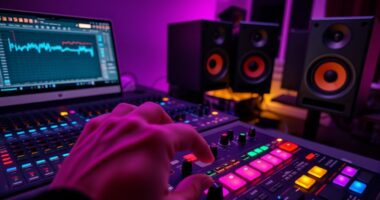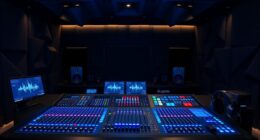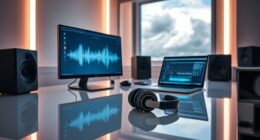When you try to play it safe as an experimental musician, it can backfire in unexpected ways. Relying on conventional methods can stifle your creativity, leading to dissonance rather than harmony. Your unique voice may get lost in familiar structures, and the performance could feel less authentic. Embracing risk is often the key to unlocking true artistic expression. Discover how you can harness unpredictability to elevate your sound and engage your audience more effectively.
Key Takeaways
- Attempting to conform to conventional structures can stifle the creativity inherent in experimental music, leading to uninspired performances.
- Relying on traditional notation may disconnect a musician from the spontaneity and unpredictability that defines experimental music.
- Audience expectations for safety and familiarity can limit the unique experiences that arise from indeterminate compositions and spontaneous choices.
- Risk-taking is essential for growth; playing it safe may result in a loss of artistic identity and engagement with the audience.
- The tension between conventionality and innovation can alienate both the musician and the audience, undermining the core principles of experimental music.
The Nature of Experimental Music
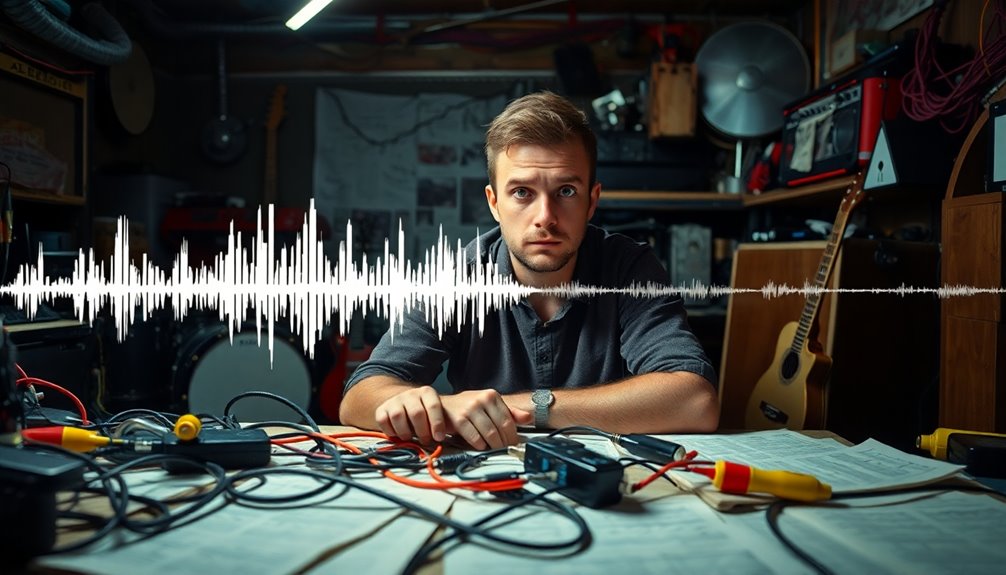
Although experimental music can seem daunting at first, it offers a rich landscape for exploration and innovation. Emerging in the mid-20th century, this genre flourished in Europe and North America, with pioneers like John Cage and Pierre Schaeffer leading the charge. They challenged conventional music by introducing indeterminacy and *musique concrète*, reshaping how you think about sound. The post-WWII technological boom, particularly magnetic tape, further transformed musical composition.
By embracing randomness through aleatoric techniques and graphic scores, you can create unexpected experiences. Free improvisation is another technique that allows for spontaneous creation, further enhancing the unpredictability of the music. Environmental factors also play a crucial role, allowing your surroundings to shape your music.
Ultimately, experimental music blurs the lines between sound, noise, and various art forms, inviting you to redefine your understanding of what music can be.
Attempts at Conventionality
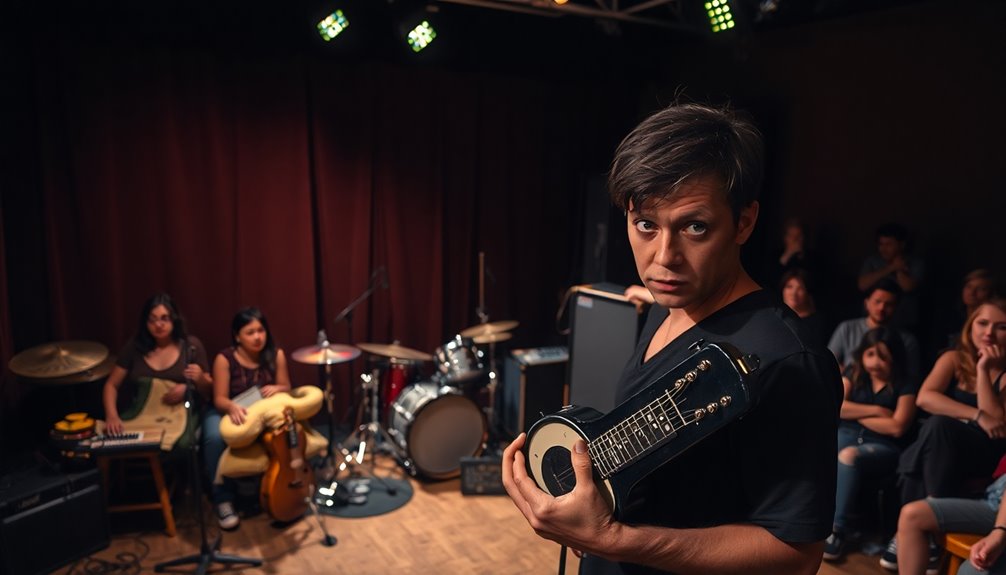
Experimental music challenges traditional boundaries, but many artists still find themselves grappling with the desire for conventionality.
You might reject traditional notation, opting for graphic scores or instructions instead. However, this can lead to friction with established musical institutions, which often resist your unconventional approaches. Writing about your process can help clarify your artistic intentions and foster deeper understanding among your audience. Additionally, the use of AI-powered tools can offer new avenues for creativity and innovation in your compositions.
While collaborating with other art forms like dance can provide support, audience perception remains a hurdle; many find experimental music alienating compared to familiar forms.
Limited access to technology early on forced you to innovate with available tools, but these constraints can create tension.
Ultimately, your attempts to embrace conventionality may clash with the very essence of experimental music, pushing you to navigate a complex artistic landscape that constantly challenges your instincts.
The Unexpected Outcomes
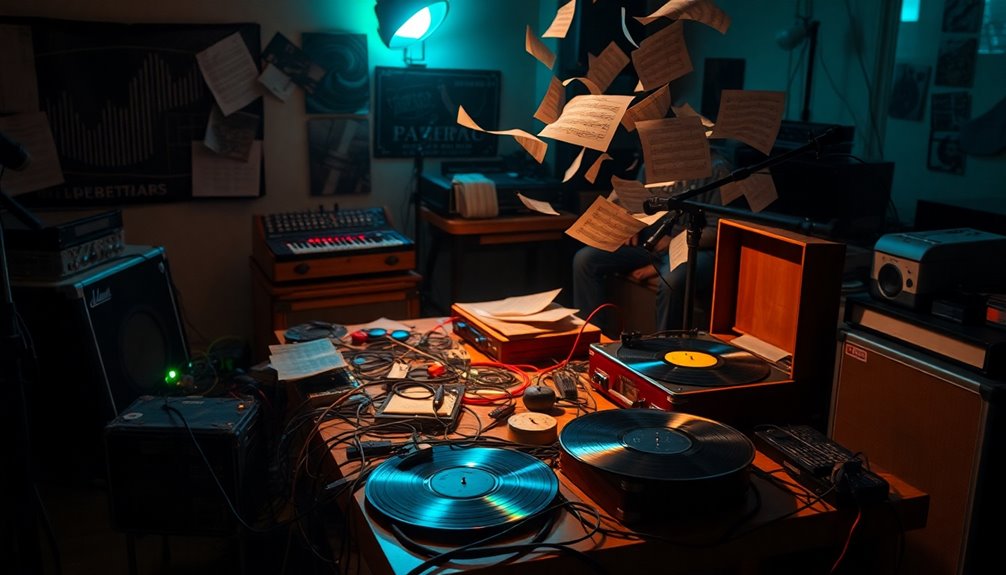
When you embrace indeterminacy in your compositions, you're often met with unexpected outcomes that can surprise even the most seasoned musicians. The use of unconventional instruments, like those from Harry Partch, adds layers of unpredictability, while techniques such as musique concrète and free improvisation further challenge traditional norms. Each performance becomes a unique experience, shaped by variable sonic outcomes and collaborative improvisation. You might find that physical notation leads to performances that sound entirely different from your intentions. This unpredictability not only fosters creativity but also raises questions about the composer's responsibility and control. Ultimately, the thrill of experimentation lies in the surprises that emerge, often creating captivating and innovative soundscapes that defy expectations.
Audience Reception and Engagement

Understanding audience reception and engagement is crucial for contemporary classical music (CCM) performances, especially since the experience can significantly influence how listeners perceive and connect with the music. Your audience likely consists of educated individuals, and their musical expertise can shape their engagement. Younger listeners might appreciate diverse styles, crossing genre boundaries, while social inequality often limits audience diversity. Engaging them effectively requires understanding their preferences and emotions, as their responses are often linked to personal experiences. Data-informed curation can help institutions tailor programming to audience preferences and demographics. Additionally, fostering a supportive nature within the audience can enhance their connection to the performance. Context matters too; extramusical elements can enhance enjoyment. Incorporating interactive components can boost participation, fostering a sense of community.
Lessons Learned From the Experience
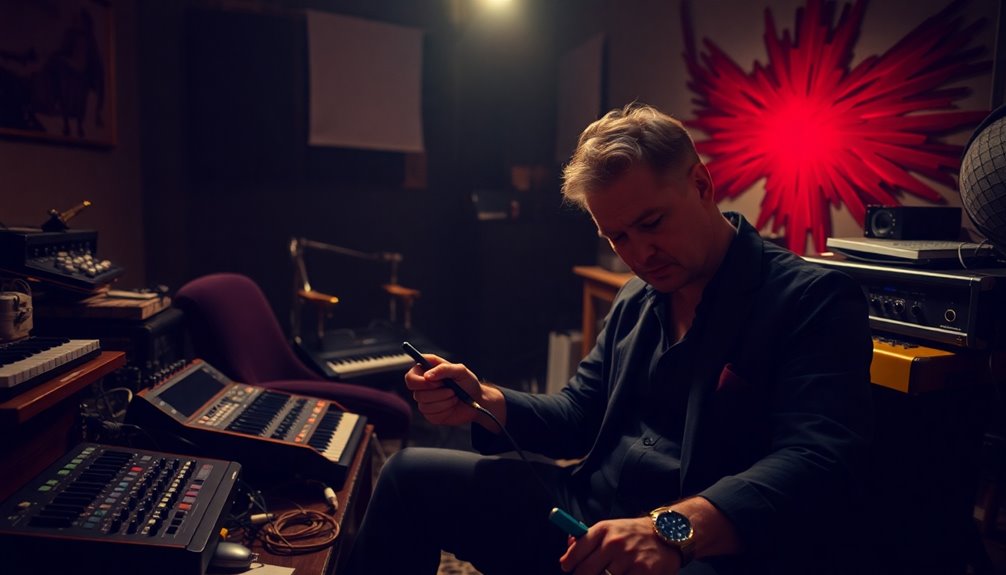
Engaging with an audience can teach valuable lessons about performance and creativity. You'll realize that practicing risk-taking in the rehearsal space is essential for building the confidence needed for fearless performances.
By experimenting during practice, you reduce the fear of mistakes, and internalizing those successes boosts your self-efficacy. However, it's vital to balance risk-taking with technical proficiency to maintain a polished sound. Félicia Atkinson's approach to music as architecture reflects the importance of creating distinct functions within your overall project. Additionally, incorporating mindfulness techniques into your practice can enhance focus and reduce performance anxiety.
Daily practice of small risks can lead to significant growth over time. Remember, experimental music thrives on exploration and embracing errors.
Community support is invaluable, helping you navigate criticism that often undervalues creativity. Ultimately, finding a balance between discipline and innovation is key to enhancing your artistic journey.
The Future of Experimentation in Music
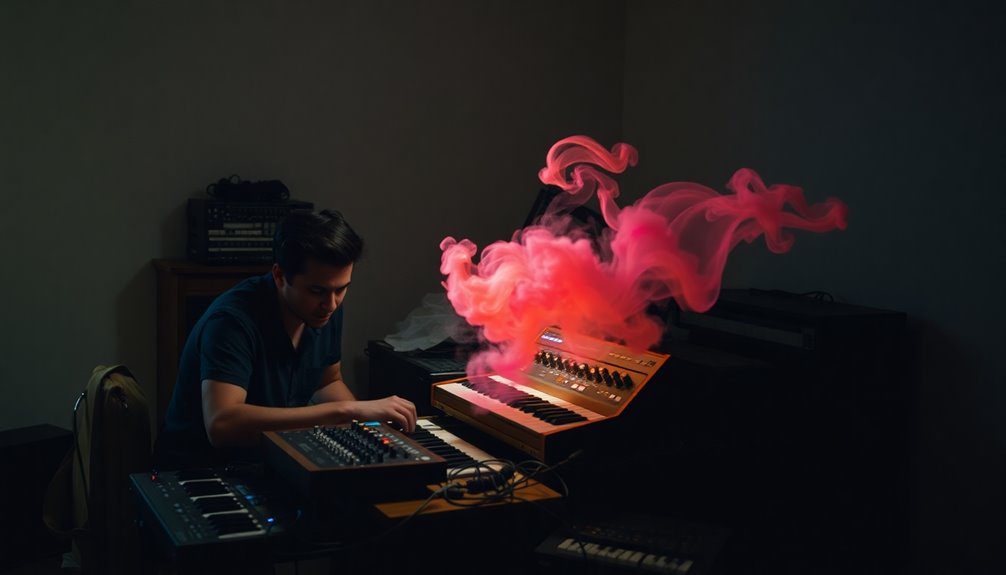
As the landscape of music continues to evolve, the future of experimentation promises exciting possibilities for artists and listeners alike.
You'll witness genre-bending artists pushing boundaries and indie musicians shaping mainstream trends. The rise of AI-generated music and innovative software opens new avenues for creativity, while virtual and augmented reality offer immersive experiences. This evolution is further propelled by the rise of indie artists who are gaining traction in the mainstream market, showcasing the potential of non-traditional paths. The integration of AI in mobile devices is revolutionizing how artists create and interact with music.
Expect to hear unconventional themes, like animal-inspired sounds, gaining traction alongside imperfect aesthetics that celebrate authenticity. Global influences, such as Afro house and reggaeton, enrich the soundscape, inviting listeners to engage with diverse styles.
Although experimentation involves risks, the growing acceptance of these elements in mainstream music expands your horizons and encourages deeper connections with the art form.
Embrace this dynamic evolution!
Frequently Asked Questions
What Defines an Experimental Musician's Style and Approach?
An experimental musician's style and approach are defined by innovation and a willingness to challenge norms.
You embrace unconventional techniques, often using non-traditional instruments and mixed media. Indeterminacy plays a key role, allowing chance to influence your compositions.
You might also favor improvisation, collaborating with artists from various disciplines to create unique experiences.
How Does Technology Influence Experimental Music Today?
Imagine a painter with a palette filled with colors yet to be discovered.
Technology acts as that vibrant palette for you, expanding your canvas in experimental music. You harness AI to conjure unique sounds, blending genres like a chef mixing spices.
Virtual reality transports you and your audience into immersive realms, while innovative tools encourage you to take daring leaps.
Embracing this tech, you redefine boundaries and breathe life into your creative vision.
Are There Specific Genres Within Experimental Music?
Yes, there are several specific genres within experimental music.
You'll find avant-garde metal, which merges metal with unconventional sounds, and avant-pop, pushing pop boundaries.
Free improvisation emphasizes spontaneity, while industrial music uses noise creatively.
Musique concrète employs recorded sounds as raw material.
Other genres include noise music, drone music, and neofolk, each offering unique explorations of sound.
These genres showcase the diversity and innovative spirit of experimental music.
What Role Does Improvisation Play in Experimental Music?
Improvisation plays a crucial role in experimental music by allowing you to explore spontaneous creativity and emotional expression.
It pushes you to take risks, leading to unpredictable outcomes that can surprise both you and your audience. This dynamic interaction fosters a unique musical conversation, inviting collaboration and blending genres.
With improvisation, you create innovative soundscapes, breaking traditional boundaries while continuously learning and evolving as a musician.
It's an exciting journey of artistic exploration!
How Can Experimental Music Be Integrated Into Education?
Think of a painter blending colors on canvas; experimental music can add vibrant strokes to education.
You can integrate it by merging with subjects like art or literature, enhancing creativity. Encourage hands-on projects, utilize technology for composition, and engage with local musicians.
This approach not only fosters critical listening but also develops problem-solving skills. By exploring diverse cultural contexts, you'll help students appreciate the rich tapestry of sound in their learning journey.
Conclusion
In the end, your quest for conventionality may have backfired, but it's a bold reminder that boundaries in music are meant to be bent. Embracing the unexpected can spark sensational sounds and ignite innovative ideas. So, don't shy away from the strange; instead, celebrate the chaotic creativity that defines true artistry. Your future endeavors can flourish if you fearlessly follow your instincts. Remember, the magic of music often lies in the marvel of the mysterious.



